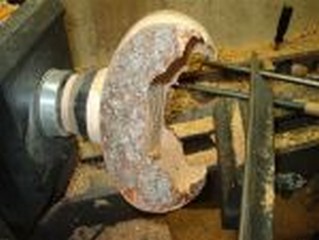
I decided to compromise and err on the side of laziness. The headstock got rotated about 20° and I was able to use the arm brace comfortably.


I decided to compromise and err on the side of laziness. The headstock got rotated about 20° and I was able to use the arm brace comfortably.
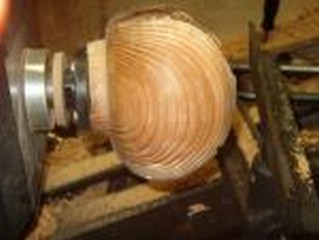 See Video Here
See Video Here
The surface has been sanded to 600 with the lathe off. I feel it is easier with this size of gaps, however it is a skill in its own right and does require a fair amount of practice. Keep the disk moving. He who hesitates has a flat spot.
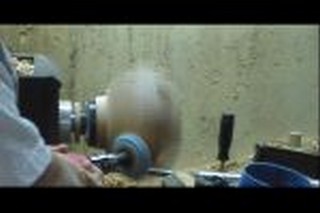 See Video Here
See Video Here
It is certainly possible to sand the surface with the piece running, but it will require a firm hand withstanding a lot of vibration. I am not sure if it would be worth it nor if as good a job could be done, at least by me.
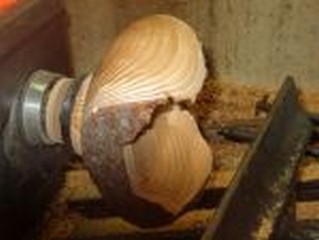
There has been a bit of a chip out on the edge. I am not worried about it on a piece like this. There will likely be other difficulties with the edge in places. The wood is dry and prone to a bit of chip and tear out.
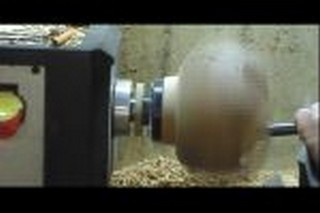 See Video Here
See Video Here
A lot of the wood can be removed with the 45 ° tool in the arm brace. Here it is used to undercut the edge at the rim and to work down the sides.
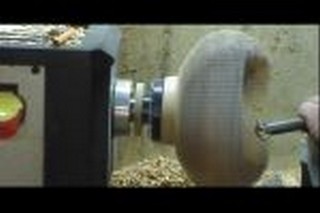 See Video Here
See Video Here
More pronounced work under the rim is needed to develop the thin wall. It needs to be done now while there is still mass to reduce vibration somewhat and to lend support to the developing wall.
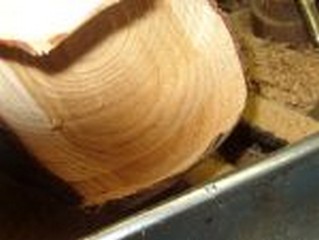
You can see the strong shelf left by the tool as well as the typical ridges from the small cutter tip. The ridges will sand quickly and the shelf happens as I cut so as to leave a lot of mass below the thin wall. Even so it vibrates a lot with the continued slap as the tool moves from air to wood.